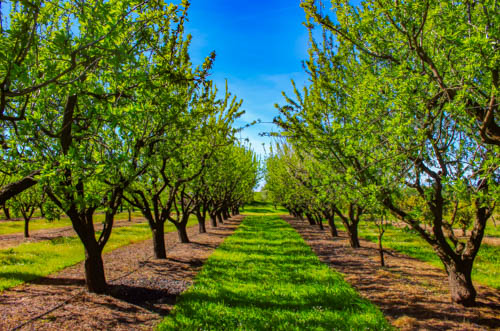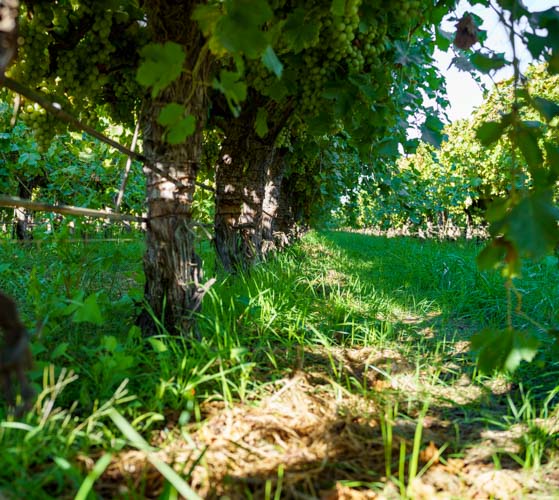If you are a farmer who is looking for a way to improve your soil health, reduce erosion, conserve moisture, and enhance your crop yields, you might want to consider planting cover crops. Cover crops are plants that are grown between cash crops or during fallow periods to cover the soil and provide numerous benefits. In this blog post, I will explain what cover crops are, what types of cover crops are available, and what benefits of growing them.
What are cover crops
Cover crops are any crop grown to cover the soil and may be incorporated into the soil later for enrichment. They are not harvested for sale or consumption, but rather for their ecological services.
Some examples are:
Here are some row crop examples that can be used as cover crops.
- Annual ryegrass: a grass that scavenges unused fertilizer and releases nutrients back into the soil for the next crop to use.
- Oilseed radish: a brassica that breaks up compacted soils with its deep taproot and suppresses weeds with its rapid growth.
- Winter cereal rye: a grass that prevents soil erosion, reduces weed pressure, and adds organic matter to the soil.
- Oats: a grass that improves water infiltration, attracts beneficial insects, and provides forage for livestock.
- Crimson clover: a legume that fixes nitrogen from the air and adds it to the soil, improving fertility and therefore reducing fertilizer costs.
- Hairy vetch: a legume that fixes nitrogen and provides mulch for no-till systems, reducing soil temperature and moisture loss.
- Austrian winter pea: a legume that fixes nitrogen and provides a high-protein forage for livestock or wildlife.
- Forage turnip: a brassica that breaks up compacted soils, scavenges nutrients, and provides forage for livestock or wildlife.
The benefits
Cover crops can provide many benefits to your farm, here are just a few:
- Controlling erosion: Protect the soil from wind and water erosion by reducing runoff, increasing infiltration, and stabilizing soil aggregates.
- Suppressing weeds: Compete with weeds for light, water, and nutrients, reducing their growth and seed production. Some cover crops also release allelopathic substances that inhibit weed germination or growth.
- Reducing soil compaction: Deep roots can penetrate hardpans and improve soil structure, porosity, and aeration.
- Increasing moisture and nutrient content of soil: Capture and recycle nutrients that would otherwise leach out or evaporate. They can also increase water holding capacity and reduce evaporation by shading the soil surface.
- Improving yield potential: Improve soil fertility, water availability, pest management, and microclimate, leading to higher yields and quality of cash crops.
- Attracting pollinators: Flowers will provide nectar and pollen for bees and other pollinators, enhancing crop pollination and biodiversity.
- Providing habitat for beneficial insects and wildlife: Provide food, shelter, and refuge for predators, parasitoids, decomposers, and other beneficial organisms that help control pests and cycle nutrients. They can also provide food and cover for birds, mammals, reptiles, amphibians, and other wildlife.
- Providing food to animals: Cover crops can be grazed or harvested as forage or hay for livestock or wildlife. This can reduce feed costs, improve animal health, and diversify income sources.
How to grow cover crops
Cover crops can be grown in different ways depending on your goals, climate, cropping system, and resources. Here are some general tips on how to grow cover crops:
- Choose what suits your needs: Consider your objectives, cash crop rotation, soil type, climate, equipment, labor availability, pest pressure, etc. Consult local experts or resources for recommendations on suitable cover crop species, varieties, seeding rates, planting dates, termination methods, etc.
- Plant at the right time: Plant as soon as possible after harvesting or terminating your cash crop to maximize their growth period and benefits. Avoid planting them too late or too early to prevent competition or interference with your cash crop.
- Crop Management: Monitor your cover crop growth and performance regularly. Adjust your irrigations, fertilization, pest management, grazing management practices as needed. Terminate your cover crop before it sets seed or becomes too mature to prevent weed problems or nutrient immobilization. Incorporate your cover crop residue into the soil or leave it on the surface as mulch depending on your tillage system.
Conclusion
Cover crops are an excellent tool to improve your farm’s soil health and enhance your farming practices. They can provide multiple benefits such as controlling erosion, suppressing weeds, reducing soil compaction, increasing soil moisture and nutrient content, improving yield potential, attracting pollinators, and foster sustainability.
To grow cover crops effectively, you need to choose the right crops for your needs, plant them at the right time, and manage them properly. By doing so, you will reap the rewards of cover crops and enjoy a more sustainable and profitable farming business.
If you are looking for user-friendly crop management software, please check out AgNote. You can register for a free seven-day trial today!

